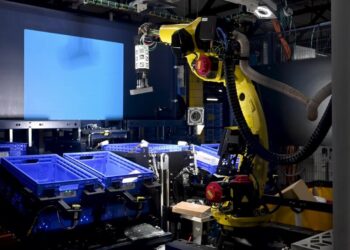Seattle-Tacoma International Airport will become one of the first airports to implement CLEAR’s new biometric eGates later this month, reflecting the region’s broader strategy to leverage technology for managing increased international travel ahead of the 2026 FIFA World Cup.
The automated gates, launching at Sea-Tac the week of August 31, represent a significant expansion of facial recognition technology in airport security processes. CLEAR+ members who opt into the system can complete identity verification in three to six seconds by having their facial image matched with identity documents and boarding passes before proceeding directly to physical screening.
The technology deployment comes as Seattle prepares to host six World Cup matches next year, with more than 20 million international visitors expected to fly to the United States for the tournament. Sea-Tac’s adoption of advanced security technology positions the airport to handle unprecedented passenger volumes while maintaining security standards.
CLEAR CEO Caryn Seidman-Becker emphasized the system’s integration and speed, noting that the “fully integrated” process represents a single-step transaction that bypasses traditional TSA podium interactions. The company maintains that it transmits only limited data and cannot override TSA security decisions or manually open gates.
The public-private partnership between CLEAR and the Transportation Security Administration requires no taxpayer funding, according to company statements. This financing structure allows airports to upgrade security infrastructure without direct public investment, though passengers must pay $209 annually for CLEAR+ membership to access the service.
Sea-Tac’s participation in the pilot program follows implementations at Hartsfield-Jackson Atlanta International Airport and Ronald Reagan National Airport, with plans for expansion to more than 30 airports within the next year. The rapid rollout suggests significant industry confidence in biometric technology’s effectiveness for managing airport congestion.
The biometric gate implementation builds on existing facial recognition adoption at Sea-Tac, where several airlines already offer TSA PreCheck Touchless ID options. This incremental technology integration reflects the airport’s measured approach to implementing new security systems while maintaining passenger choice and privacy considerations.
For Seattle-area travelers, the eGates represent another premium service option that could reduce security wait times for those willing to pay membership fees. The technology’s effectiveness during high-traffic periods, particularly during World Cup events, will likely influence broader adoption across the aviation industry.
The system’s data handling protocols address growing privacy concerns about biometric technology in public spaces. CLEAR’s limitations on data access and inability to override security decisions suggest recognition of the need to balance efficiency gains with privacy protection and security authority preservation.
Airport technology adoption increasingly focuses on processing capacity improvements as travel volumes return to and exceed pre-pandemic levels. Sea-Tac’s investment in multiple technological solutions, including self-driving shuttles and expanded facial recognition options, demonstrates comprehensive planning for managing growth.
The World Cup timeline creates urgency for infrastructure improvements that might otherwise be implemented gradually. Seattle’s six-match hosting commitment requires airport systems capable of handling concentrated international arrival surges that could overwhelm traditional processing capabilities.
CLEAR’s expansion strategy targets major hub airports where security bottlenecks most significantly affect passenger experience and airline operations. The company’s growth from a security-focused service to broader travel facilitation reflects the increasing privatization of airport efficiency solutions.







